Last Chance to Catch NYC's Holiday Notalgia Train
We met the voices of the NYC subway on our nostalgia ride this weekend!


In between the World Wars, as New York’s middle-class population was burgeoning and the city was developing at a rapid pace, a new brand of architecture came into existence. Today, we know the style as Art Deco. Characterized by all things bold, angular, striking, and theatrical, Art Deco was the bridge between classical intricacy and modern minimalism, but it has a unique style all its own.
Now, New York City is the worldwide capital of the architectural style, with some of its Art Deco buildings becoming undeniably iconic and world-famous, like the Chrysler Building and the Empire State Building. Others are lesser-known, but all are emblems of a unique time in American history when jazz was taking the city by storm and new levels of freedom were suddenly attainable for more people than ever before. Read on to discover 10 of the most beautiful, lesser-known Art Deco buildings, from subway stations, to garden gates, to luxury apartments, and more.
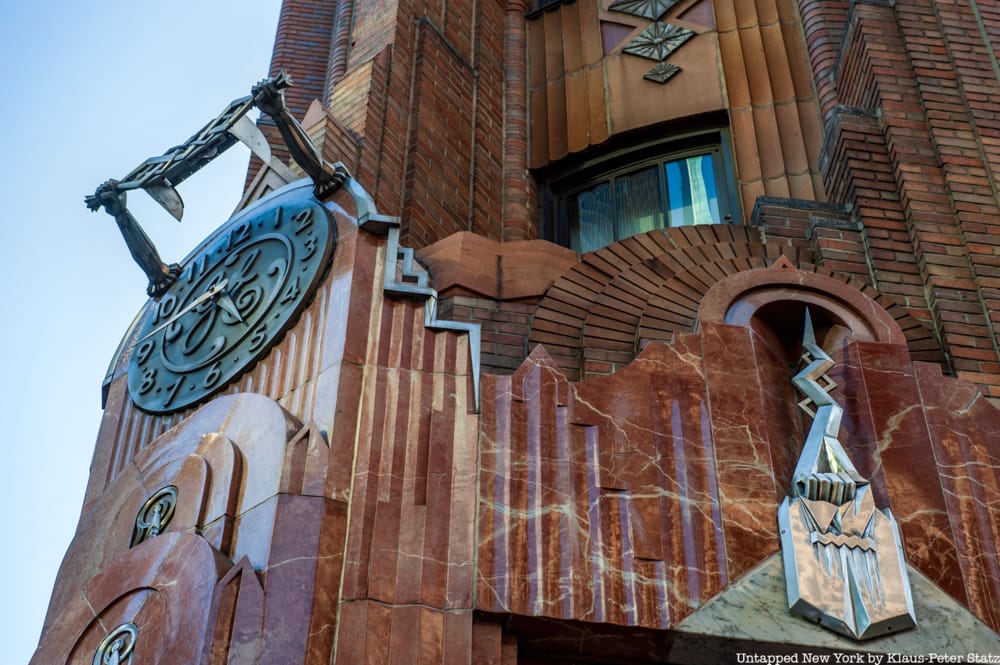
When someone thinks of Art Deco architecture they think of looking up. But what if some of the most interesting stories about New York City’s Art Deco structures are better told underground? Explore landmarks like the Chrysler Building, Rockefeller Center, and more from a new perspective.
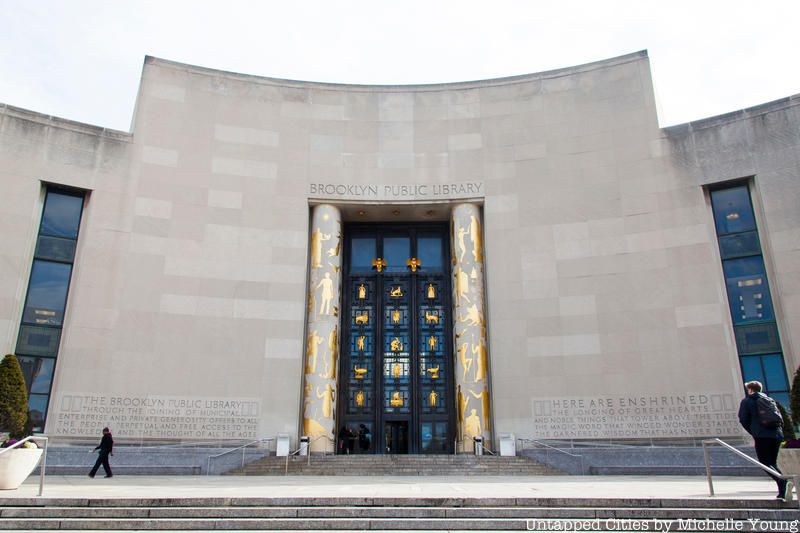
Located next to the entrance to Prospect Park, the Brooklyn Public Library is easily recognizable due to its massive and striking entranceway characterized by 50-foot columns embellished with luminescent light-gold figures. The library is a tribute to learning and literature, an inviting and imposing presence that touches on modern Art Deco elements while honoring the thinkers and icons of the past.
The library was made mostly of unblemished limestone, a smooth light material broken only by its stunning entranceway. Above the entrance’s doors, the sculptor Thomas H. Jones designed 15 squares, each bearing the insignia of a unique character from American literature, such as Edgar Allan Poe's Raven, Herman Melville’s Moby Dick, and Mark Twain’s Tom Sawyer. Below Jones’ designs, C. Paul Jennewin also created 15 squares that hold golden reliefs of important figures in the development of science and art. Its columns are emblazoned with the golden silhouettes of famous mythological figures.
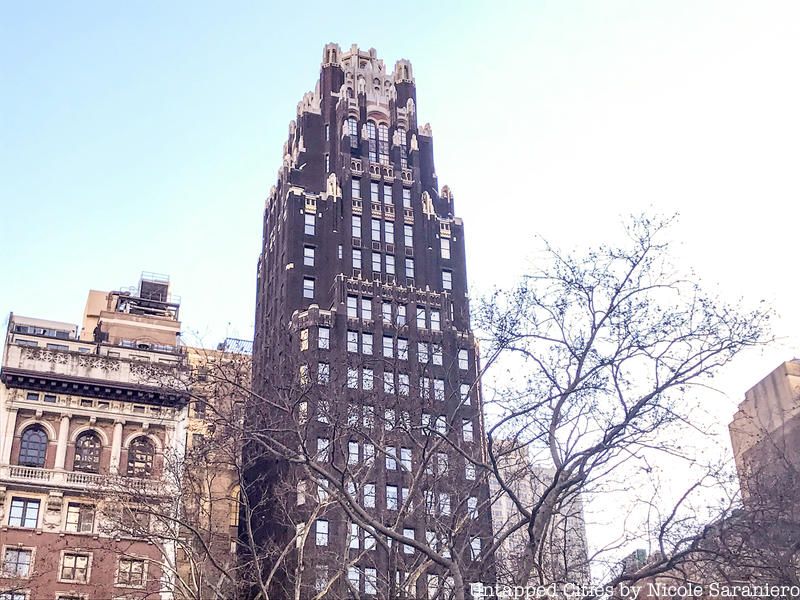
With its lavender-tinted windows, towering gold-crowned facade, and domed entranceway, the Bryant Park Hotel — originally the American Radiator Building — looks like it might belong in a fairytale or a nightmare. In 1924, architect Raymond Hood, who was also involved in Rockefeller Center and the New York Daily News building, designed the building that contains some elements of the neo-Gothic tradition, lined with leering gargoyles and twisted spires. The building’s vertical windows are distinctly modern, and its dark black facade, interrupted by brilliant gold trimming, lodges it firmly in the Art Deco world. Designed to represent the product that it was created to house — a radiator —the building has been compared to glowing coal, especially when illuminated by floodlights at night.
The American Radiator Building originally served as a large public showroom for radiators, boilers, and other new inventions of the time. Its black brickwork gives it an imposing, looming presence that makes it seem larger than life. Golden carvings of dragons, dolphins, and other creatures add to its otherworldly aura. Today it serves as a luxury hotel and hosts a bar and a movie theatre in its basement.
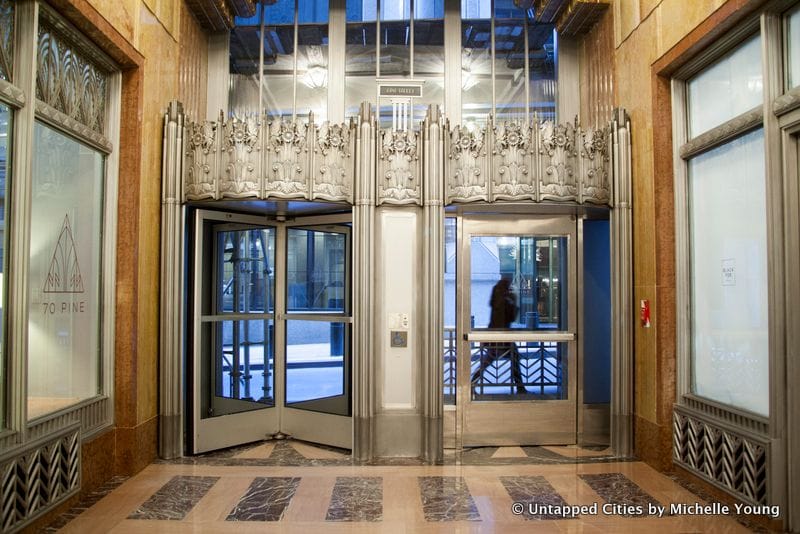
At 952 feet, 70 Pine was the tallest building in downtown Manhattan from 1932 until the completion of the World Trade Towers. The building was one of the last Art Deco skyscrapers completed, for World War II began soon after it was built and another skyscraper did not rise up downtown for another 30 years. Originally, the building was called the Cities Service Building after the company that built it in 1932. Later, it became the AIG Building after the company that bought it in 1976 was forced to sell it during the Great Recession.
Today, it is an apartment building and the 20th tallest building in the city at 952 feet tall. With its rooftop glass observatory and limestone walls designed to resemble a mountain, 70 Pine is one of New York’s most recognizable skyscrapers. It has a lot to offer on the inside, too — there are two wraparound terraces near the top, and a gym, hotel, and Michelin-starred restaurant.
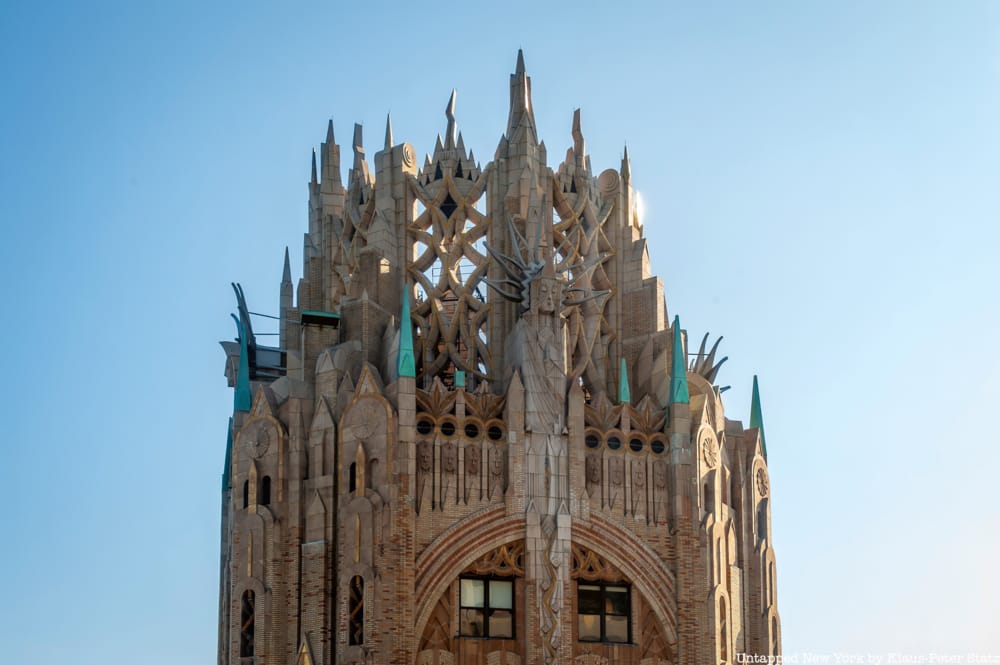
The RCA Building’s most recognizable feature is its extravagant, imposing rooftop, with its blue and white spires shooting up to the sky like icicles or stalactites. The building, which was completed in 1920, was designed by the firm Cross & Cross for the company General Electric. Cross & Cross designed the building to emulate electricity and radio waves, hence the spires shooting off in all directions. Its red brick and marble facade boasts silver lighting bolts and iron clocks bordered by elegant brick fans. The building’s insides are just as grand as its outsides, complete with vaulted ceilings, aluminum plating, aquamarine-colored glass chandeliers, and light pink marble walls.
Located at 570 Lexington Avenue, the building commands a striking presence even when compared to the more modern skyscrapers that have risen up around it. At night, lit up by fluorescents, it almost seems to be a mass of blue fire, rising above the city and proclaiming the all-consuming nature of technology, a phenomenon that continues to define the modern world.
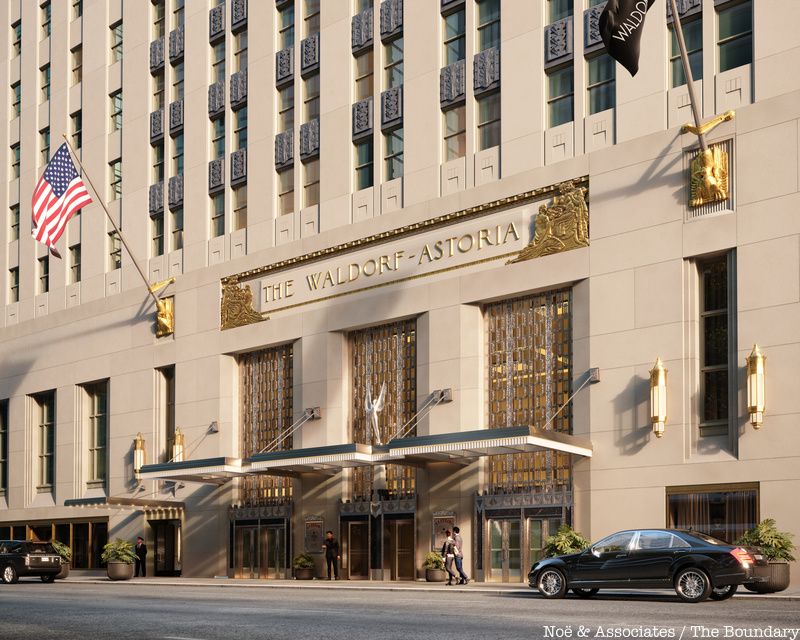
The Waldorf-Astoria Hotel was the world’s tallest hotel when it opened, rising 625 feet into the air. From the exterior, the building is a relatively underwhelming mass of gray brick and stone, but you can see the Art Deco elements upon a closer look. The hotel’s entrance is covered with drapes emblazoned with sculpted women, and its foyer is embellished with mythological imagery.
Though the Waldorf-Astoria Hotel transferred through many buildings, the architects of the current building, Shultze & Weaver, were faced with the imperative to design a building that both appealed to modern sensibilities and maintained the extravagant Victorian beauty of its prior location. Thus, the Waldorf-Astoria came to embody both Greek classicism and Art Deco modernism. Its iconic Art Deco interiors were recently designated as a New York City interior landmark, a relief to preservationists while the building underwent partial conversion into condos, and the hotel underwent renovations.
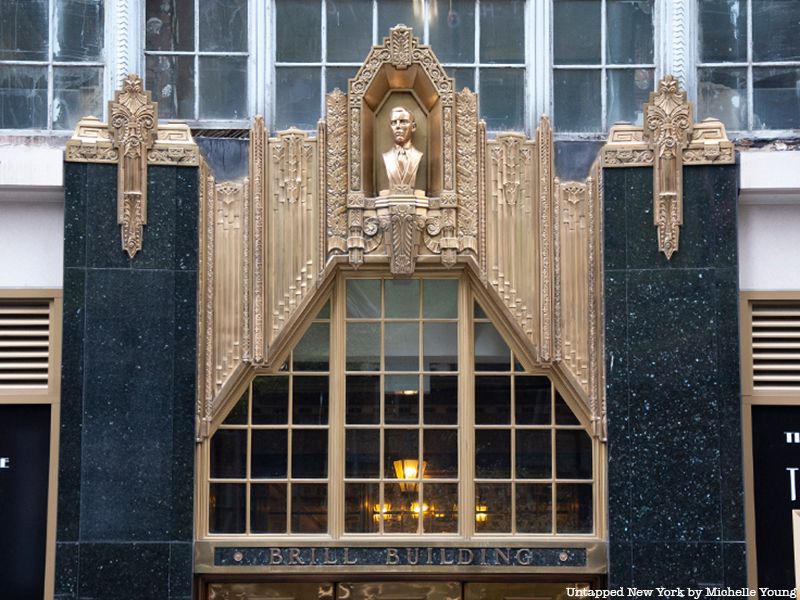
The Brill Building, located at 1616 Broadway on 49th Street, is relatively small when compared to the others on this list — though it was originally intended to be the world’s tallest building — but its architecture made a big impact on Art Deco architecture. A. E. Lefcourt designed the building’s golden entranceway and modeled the bust in its center after his son, Alan, who died young while the building was under construction. Other Art Deco designs present themselves in the Brill Building’s floral designs atop windows and in the terra-cotta reliefs.
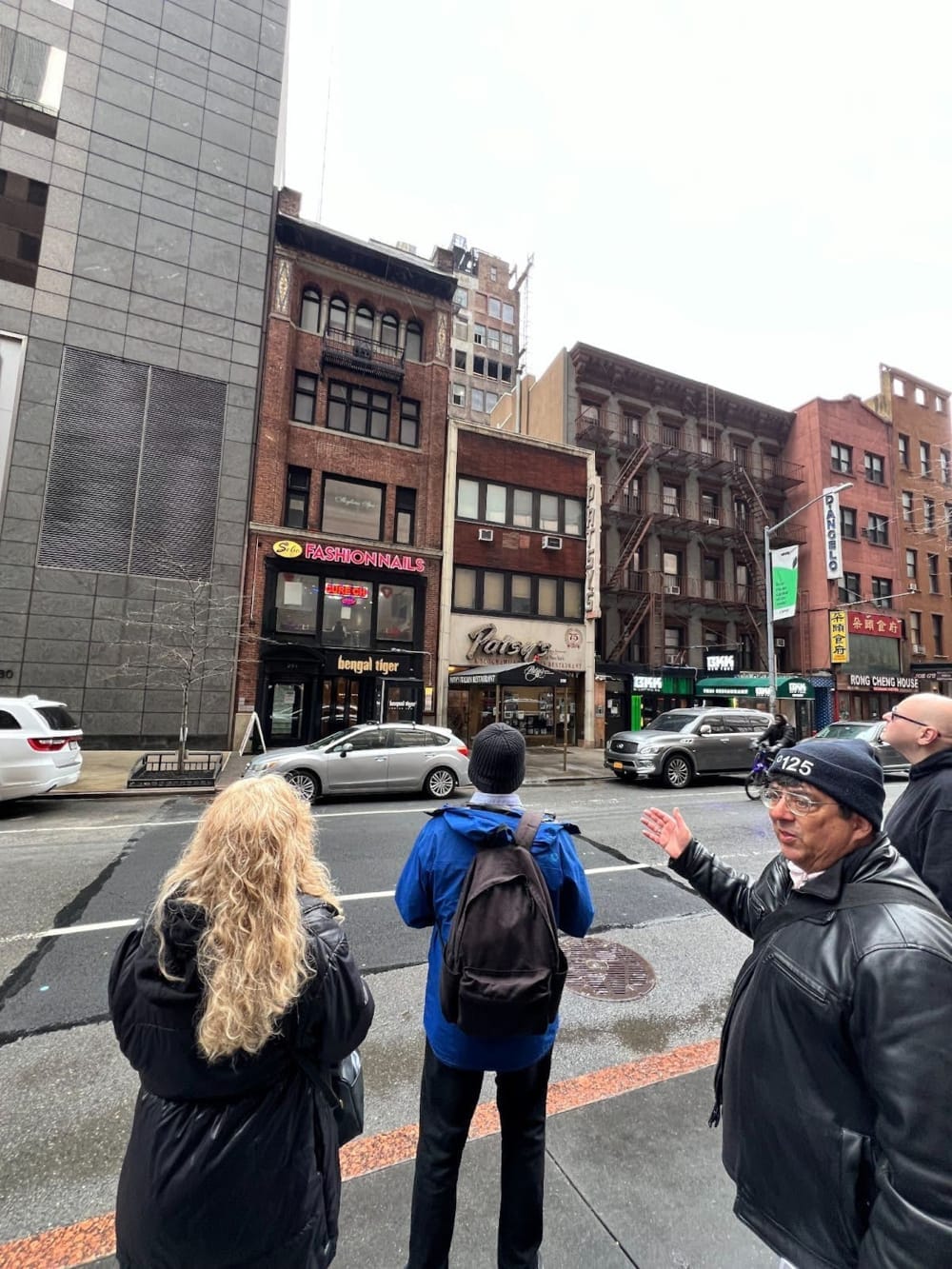
Grab a spot on this previously sold-out tour led by music industry professional Mark Satlof!
The Brill Building is most well-known for its importance in music history, as the building has served as the headquarters for many popular music industry offices. Many famous musicians also wrote and worked in the building, including Elvis Presley, Carole King, Frankie Valli and the Four Seasons, Liza Minelli, The Ronnettes, and more.
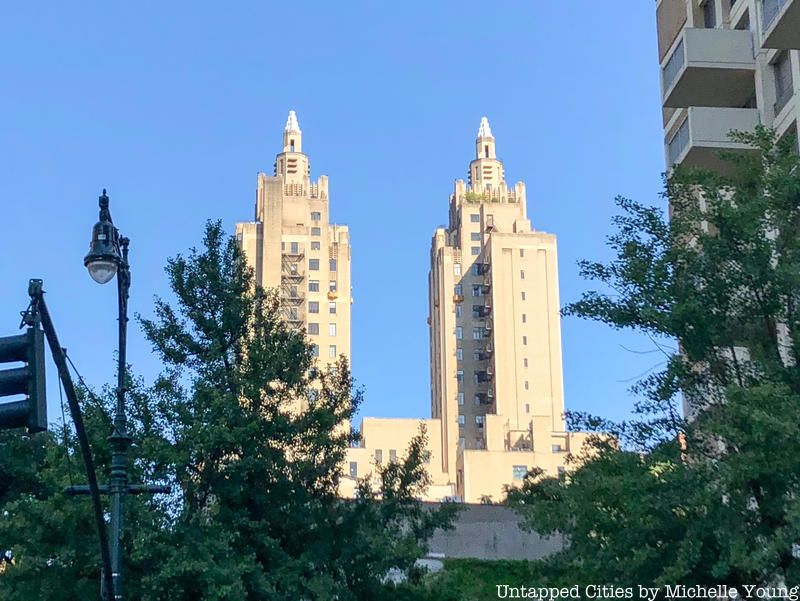
Eldorado, the mythical city of eternal opulence immortalized in Candide and other pieces of literature, may be lost to all but the most intrepid explorers. The New York apartment building that bears its name, though, is available to anyone who can swing its price tag — many millions of dollars. Located on the edge of Central Park, at 300 Central Park West and overlooking the Jacqueline Kennedy Onassis Reservoir, the Eldorado Apartments were constructed between 1929 and 1931, with designs by architecture firm Margon & Holder and architect Emery Roth.
The building’s design was futuristic for its time, with its bold parallel towers culminating in sharp spires that overlook the reservoir. Eldorado almost resembles an electric plug, reaching out of the trees, seeming ready to puncture the clouds. With yellow cast stone and yellow terra-cotta facade evoking the city that inspired its name, and three entryways bordered by bronze frames and birds among gardens of Art Deco ornamentation, the building is truly an Art Deco masterpiece.
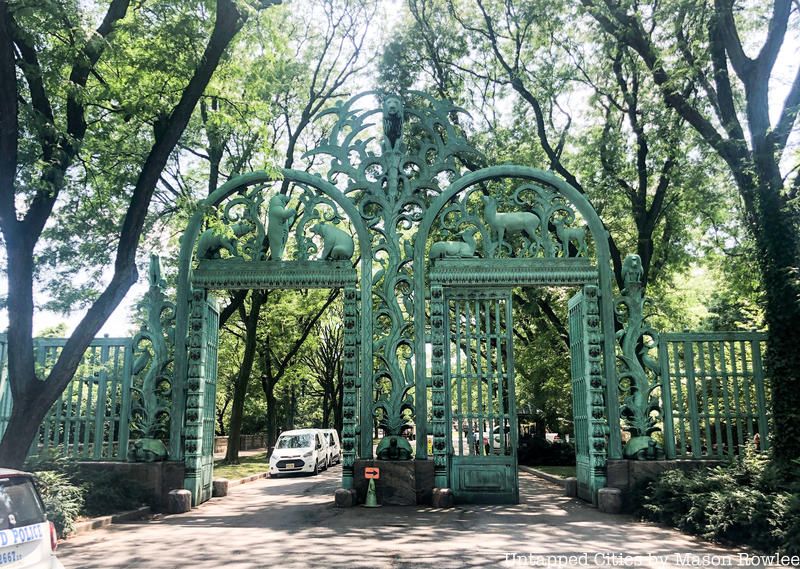
The northern entrance to the Bronx Zoo is defined by the stunning gates that present visitors’ portal into the animal kingdom. Architect Paul Manship, a prominent classicist sculptor, collaborated on the gates with the architect Charles A. Platt.
The gates, completed in 1934, marked a pronounced departure from both artists’ relatively conservative backgrounds. Their intricate, lifelike depictions of zoo animals including leaping deer, lions, birds, and more were all designed with Art Deco’s signature sinewy, angular aesthetic in mind. The gates still stand today, a fanciful introduction to the zoo and a reminder of one of the Art Deco movement’s innovative achievements.
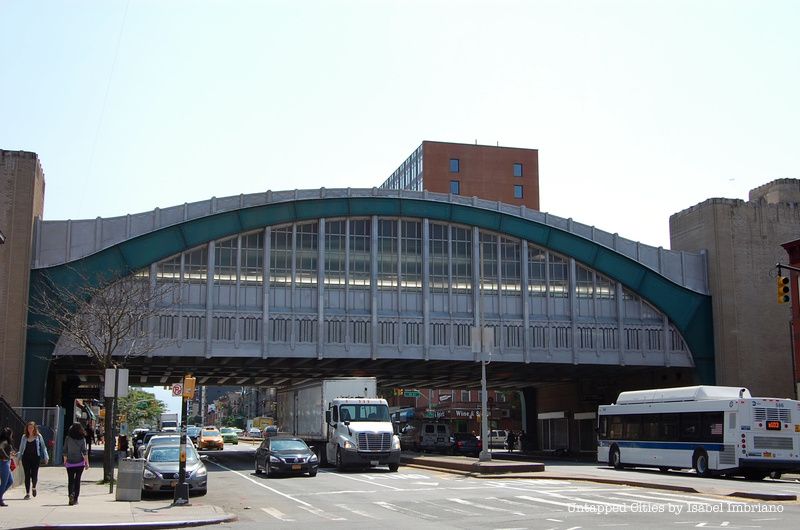
Art Deco was not only reserved for high society but could be applicable in almost any setting. Many diners, neighborhood haunts, and public places could be just as Art Deco as your average skyscraper. One such public space is Park Slope‘s Fourth Avenue & Ninth Street Subway Station. The station opened in 1933 and has remained an underappreciated gem ever since.
The Fourth Avenue & Ninth Street Subway Station is easily recognizable by its massive curved window hanging over 4th Avenue. Rising like an ocean wave, the window allows light to pour into the station. Its neat geometric angles are classic Art Deco, as are the embellishments beneath its windows. Next time you take the F or G through this station, be sure to look out for its Art Deco details.
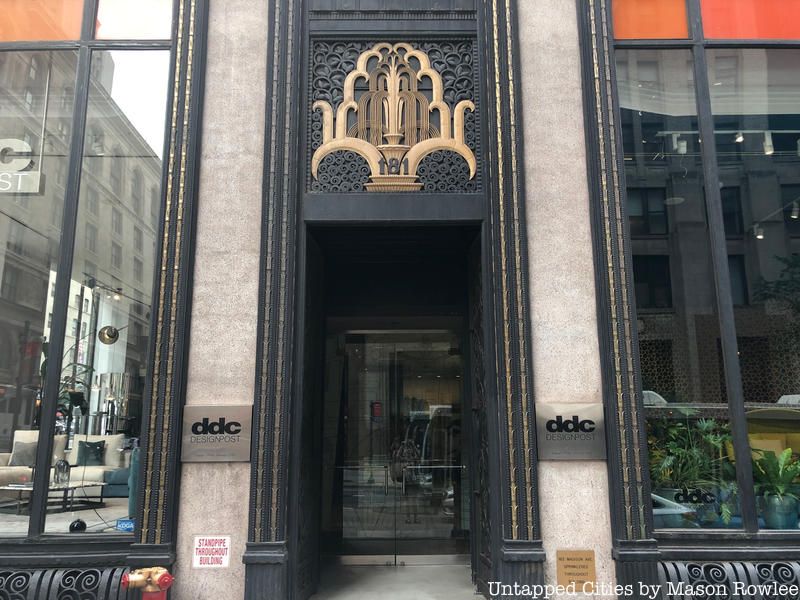
Edgar Brandt designed the entryway for this building in collaboration with Cheney Brothers, a prominent silk mill company when the Madison Avenue area was known as the Silk District. Brandt designed the entrance and exhibition hall of Cheney Brothers’ Madison Avenue headquarters in September of 1924. Although its design was primarily Neoclassical, the Madison-Belmont was one of the first buildings in New York to incorporate Art Deco motifs.
Located at 183 Madison Avenue, the building is characterized by the looming iron and bronze framework that Brandt designed to surround its entrance. Innovative for the time — the web of interlaced domes, colored black and gold and strewn with curlicues and chunky floral carvings — would soon be imitated all over the city.
For more, check out this list of the top 10 postmodern buildings of the Bronx and this list of 14 beautiful vintage Art Deco mailboxes in NYC.
Subscribe to our newsletter